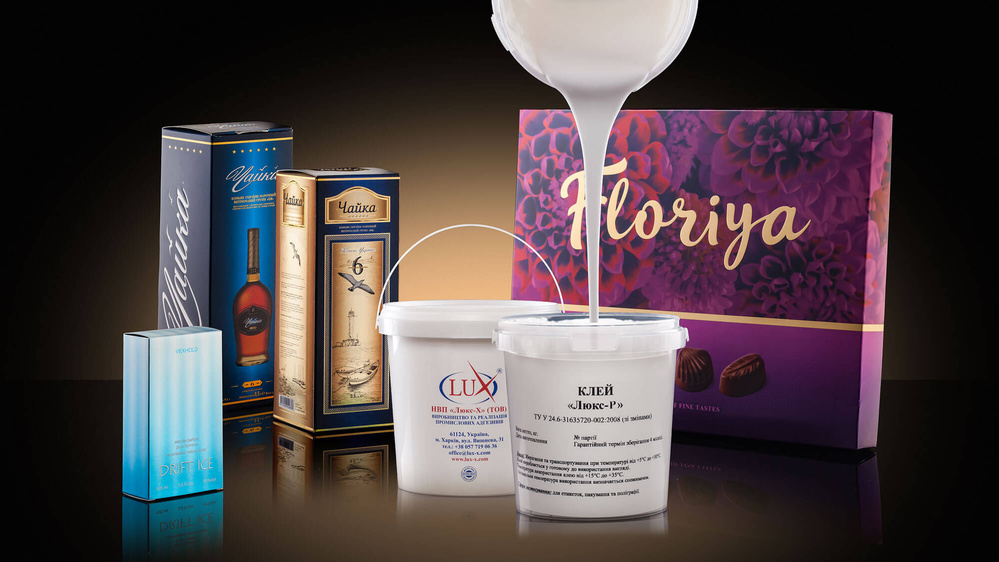PVA-BASED GLUES
- PVAc adhesives for the printing industry and packaging
- Waterproof PVAc adhesives for woodworking and furniture production
- PVAc adhesives for repair and construction
- Tips for using PVAc adhesives
PVAc-based adhesives are often used in manufacturing, repair work and at home. PVAc glue is one of the most common adhesives and is used various applications. It is non-toxic, safe for human health and easy to use.
Many wholesale companies and stores offer diverse brands of adhesives in a wide price range. Selecting a brand of PVAc glue is based on the substrates to be bonded, such as paper, wood, fabric or other surfaces. The material to be bonded determines the selection process. PVAc adhesives differ in color from snow-white to yellow and have different properties.

PVAc adhesives for the printing industry and packaging
To accomplish tasks such as binding, producing boxes, paper bags, we use polyvinyl acetate dispersion or PVAc glue. Polyvinyl acetate is a vinyl acetate polymer used in adhesives and paints. It is economical to use, has a light color and dries relatively quickly. The glue looks silky and smooth when applied to a surface with tools or special equipment. Special properties of PVAc allow long-term storage of printed products bonded together with this glue. Adhesive seams remain flexible, not brittle, and do not turn yellow during long term storage in a dry environment.

Waterproof PVAc adhesives for woodworking and furniture production
Mold and moisture resistance are two main advantages of using waterproof PVAc adhesives, although not all of them are watertight. Note that waterproofness refers to counteracting the effects of water or moisture ingress. Water tightness is counteracting the effects of water or moisture ingress, as well as immersion in water. According to the DIN norms, waterproof PVAc glues are of four types and are marked from D1 to D4. The higher the number, the better resistance to water. To choose a type of glue for wood and furniture properly, we recommend that you read the label carefully or ask for assistance from the manager who works with your company.

PVAc adhesives for repair and construction
In repair work, PVAc-based adhesive can be used for gluing all types of carpets, linoleum, various types of wallpaper, facing tiles and synthetic decorative paper-based coats. When mixing PVAc glue and water in equal parts, you get a very good sealant for plastering or priming wall surfaces before painting or wallpapering.
In the construction trade, PVAc adhesive is used for the installation of fiberboard, chipboard, OSB, MDF and plywood, as well as beams and rails. PVAc dispersion is added to putty, concrete and plaster solutions to increase the strength and water tightness characteristics.

Tips for using PVAc adhesives
- When using PVAc glue, at least one of the surfaces to be glued must be porous so that moisture can be absorbed. For example: glass with wood, but not glass with glass.
- Remains of PVAc adhesive can be cleaned with warm soapy water.
- PVAc glue dries faster in a well-ventilated room or an air-conditioned room.
- PVAc works best if the parts to be glued are clamped under pressure (clamp, machine, etc.).
- Waterproof PVA adhesives are not watertight.
- If a PVAc glue is suitable for gluing wood, it is also suitable for gluing paper or cardboard.
- PVAc adhesive can not be frozen. If it freezes the adhesive structure breaks down and the glue loses its adhesive properties.
- It takes 24 hours to reach full adhesive joint strength.






